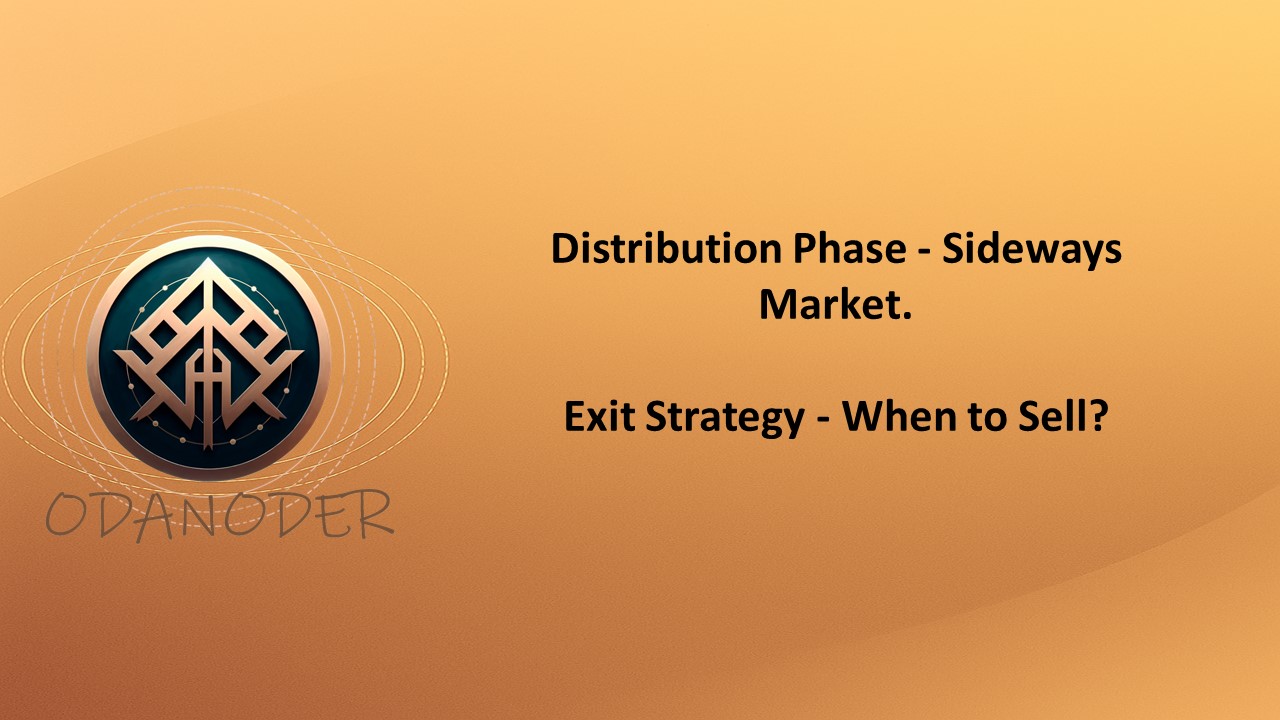📈 1. What is “sideways movement after growth”
When an asset (a coin, stock, etc.) has increased several times in value, large players (funds, “whales”) can’t just exit the market in one day — their volumes are too big.
If they start selling abruptly, the price will crash.
So they do it gradually, creating the appearance of a “calm market.”
This creates the consolidation phase — that is, sideways movement, when:
- the chart stops growing sharply,
- candles become shorter,
- volumes decrease,
- the price fluctuates within a narrow range (usually ±10–20%).
👉 This is the distribution zone — the place where smart money sells to those who arrived late, convinced that the growth “will continue.”
⏳ 2. Why exactly 5–6 weeks
This number is not random.
In most market cycles (both in crypto and in the stock market), the duration of the consolidation phase after a strong impulse ranges from 4 to 8 weeks.
This time is needed for large players to:
- slowly unload their positions,
- create an illusion of stability,
- trigger FOMO among the crowd (people see that the asset is “holding” and start buying).
After this, there’s usually a final spike (a false rally), followed by a sharp decline.
🧠 3. How this zone looks on the chart
Typical signs of sideways movement:
- The price moves within a range without breaking upward or downward.
- Volumes gradually decline — meaning interest is decreasing.
- RSI and other indicators freeze in the middle range.
- Sometimes you see a double top, flag, or rising wedge.
📊 Example in practice:
- Dogecoin in spring 2021: after rising from $0.05 to $0.70 → 6 weeks of sideways movement → then a 70% drop.
- Ethereum in May–June 2021: after $4400 → 5 weeks of consolidation → then a pullback to $1800.
💡 4. Why you shouldn’t sell earlier
If you exit during growth (green candles):
- you miss the main impulse — the exponential part of the move,
- you’re inside the euphoria phase, not the distribution,
- the market can still go 2–3x higher.
Selling during green candles without signs of sideways movement is an act of fear.
Selling during sideways movement is an act of reason.
🧩 5. How to act in practice
| Situation | What to do |
|---|---|
| Sharp growth without pauses | Observe, don’t sell |
| Price stopped growing, 2–3 weeks of sideways movement | Start locking part of the profit |
| 5–6 weeks of consolidation, volumes decreasing | Fix the main portion |
| Sharp breakdown after sideways phase | Sell the rest without emotions |
🚨 6. Why this works especially in crypto
The crypto market is highly manipulated and has limited liquidity.
Therefore, the “distribution” phase is always visible if you look carefully:
- Coins are “held” at highs, creating a sense of stability,
- Media and influencers fuel interest at that time,
- Large holders sell, knowing the crowd of buyers is coming from above.
⚖️ 7. Short summary
🔹 Don’t sell during growth — the market hasn’t exhausted itself yet.
🔹 Don’t sell at the bottom — you’re in the accumulation phase.
🔹 Sell during sideways movement after euphoria, when the price has “calmed down” and “everything seems too good.”
That’s the moment when the crowd enters — and the smart money exits.
📩 If you found this article useful and engaging, share it with a friend, retweet, or like it on Twitter.
Support us 💲 DONATION 💲
👥 Support our work by joining us on social media 🌐
❤️ Thank you ❤️
⚡️ This article was translated into English using AI.
© 2025 OdaNoder. Republishing and quoting are allowed only with an active link to the source.
🔖 #crypto #trading #investing #market #consolidation #sidewaysmovement #distributionzone #smartmoney #marketpsychology #cryptomarket #bitcoin #ethereum #altseason
